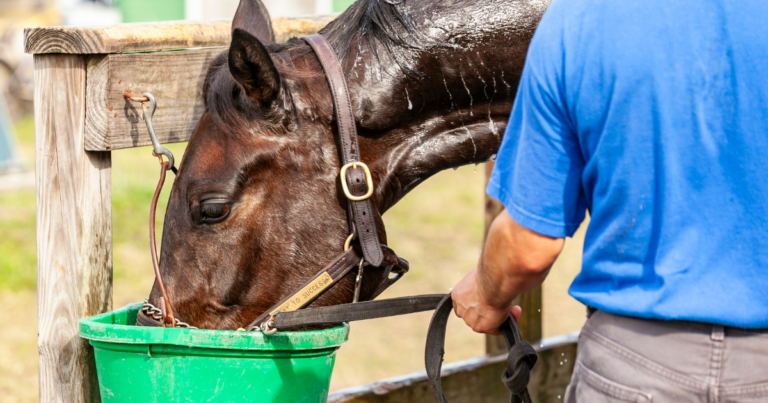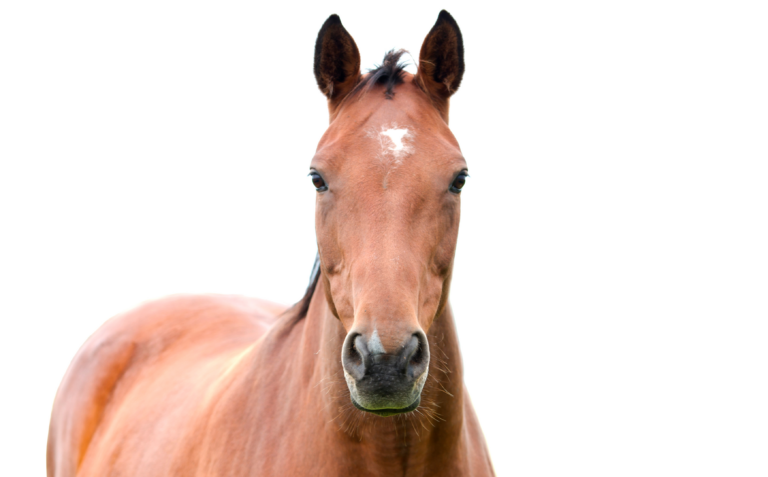FOR IMMEDIATE RELEASE
Media Contacts:
Abby Strawder
Senior Public Relations Manager, Sullivan Higdon & Sink
Abby.Strawder@shscom.com
816-283-4782
Mark Bixler
Boehringer Ingelheim Animal Health – U.S. Communications
678-209-3077
mark.bixler@boehringer-ingelheim.com
Be aware of the signs of this debilitating neurological disease
When it comes to the neurological disease Equine Protozoal Myeloencephalitis (EPM), the sooner a diagnosis is made and treatment can begin, the better the horse’s chances are for recovery. EPM is a serious neurological disease primarily caused by Sarcocystis neurona, a protozoan parasite that invades the brain, brainstem and spinal cord. Neospora hughesi is a less common cause of EPM.
One study indicates that overall, in the United States, 78 percent of horses have antibodies against Sarcocystis neurona and 34 percent have antibodies against Neospora hughesi. However, less than 1 percent exposed to EPM will develop clinical signs.
Sarcocystis neurona is spread to horses from a definitive host, in this case, an opossum. Horses become infected with EPM through contact with opossum feces through grazing or contaminated feed.The definitive life cycle of Neospora hughesi is not yet fully understood.
In a horse’s life, there can be a time when he is considered seropositive – meaning the horse has been exposed to the parasite that causes EPM. Some horses harbor the parasite for months or years and then slowly or suddenly develop signs, while others may never develop signs of EPM.
Because horses have such a high chance of being exposed to the protozoa Sarcocystis neurona or Neospora hughesi, horse owners should be aware of the subtle early signs of EPM so they can promptly consult their veterinarian for diagnosis and treatment.
When it comes to neurological diseases such as EPM, missing the subtle early signs could mean lost time before veterinary diagnosis.
Horse owners should look for:
- Stumbling or tripping
- Tilted head
- Asymmetrical muscle loss
- Lameness or gait abnormality
- Leaning against walls
While virtually every horse is at risk, some horses are at greater risk than others, with age, time of year, location, training and history all potentially affecting a horse’s susceptibility. For those horses that are exposed to the protozoa Sarcocystis neurona or Neospora hughesi, stress from things such as travel or training can compromise the immune system, thus potentially activating the disease.
“Early detection by horse owners and farm managers, diagnosis by a veterinarian and an effective treatment plan are the keys to stopping the progression of the disease,” says Sarah Reuss, VMD, DACVIM, Equine Professional Services Veterinarian for Boehringer Ingelheim. “The faster treatment begins, the better the chance for the horse to recover.”
The importance of prompt treatment of EPM cannot be overstated. Marquis (15% w/w ponazuril) is formulated to reach steady state in as little as 24-48 hours when using the loading dosage of 15 mg/kg. MARQUIS kills the parasite Sarcocystis neurona to stop it from inflicting further damage to the central nervous system.
Your horse may have been exposed to the parasites causing EPM. Make sure you’re aware of the subtle signs of this debilitating neurological disease so you can promptly contact your veterinarian.
IMPORTANT SAFETY INFORMATION: The safe use of MARQUIS in horses used for breeding purposes, during pregnancy, or in lactating mares, has not been evaluated. In animal safety studies, loose feces, sporadic inappetence, lost weight, and moderate edema in the uterine epithelium were observed. For use in animals only. Not for use in horses intended for food. Not for human use. Keep out of reach of children.
MARQUIS is a Merial product. Merial is now part of Boehringer Ingelheim.
®MARQUIS is a registered trademark of Merial. ©2018 Boehringer Ingelheim Vetmedica, Inc., Duluth, GA. All rights reserved. EQU-0600-MARQ0418.
Morgan K. EPM: Understanding this debilitating disease. American Association of Equine Practitioners. https://aaep.org/horsehealth/epm-understanding-debilitating-disease. 2016. Accessed May 1, 2018.
James KE, Smith WA, Packham AE, et al. Seroprevalences of anti-Sarcocystis neurona and anti-Neospora hughesi antibodies among healthy equids in the United States. JAVMA. 2017;250(11):1291-1301.
Reed S. Neurology is not a euphemism for necropsy: a review of selected neurological diseases affecting horses. American Association of Equine Practitioners. 54th Annual Convention Proceedings. AAEP. 2008:78-109.
MARQUIS Freedom of Information Summary supplement.
Lindsay DS, Dubey JP, Kennedy TJ. Determination of the activity of ponazuril against Sarcocystis neurona in cell cultures. Vet Parasitol. 2000;92(2):165-169.
About Boehringer Ingelheim Animal Health
As the second largest animal health business in the world, Boehringer Ingelheim is committed to improving animal health. With more than 10,000 employees worldwide, Boehringer Ingelheim Animal Health has products available in more than 150 markets and a global presence in 99 countries. For more information about Boehringer Ingelheim Animal Health, click here.
Boehringer Ingelheim
Innovative medicines for people and animals have for more than 130 years been what the research-driven pharmaceutical company Boehringer Ingelheim stands for. Boehringer Ingelheim is one of the industry’s top 20 pharmaceutical companies and to this day remains family-owned. Day by day, some 50,000 employees create value through innovation for the three business areas human pharmaceuticals, animal health and biopharmaceutical contract manufacturing. In 2016, Boehringer Ingelheim achieved net sales of around 15.9 billion euros. With more than three billion euros, R&D expenditure corresponds to 19.6 per cent of net sales.
Social responsibility comes naturally to Boehringer Ingelheim. That is why the company is involved in social projects, such as the “Making More Health” initiative. Boehringer Ingelheim also actively promotes workforce diversity and benefits from its employees’ different experiences and skills. Furthermore, the focus is on environmental protection and sustainability in everything the company does.
More information about Boehringer Ingelheim can be found on www.boehringer-ingelheim.com or in our annual report: http://annualreport.boehringer-ingelheim.com.






